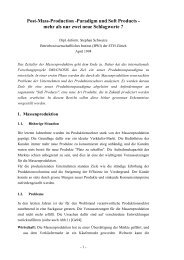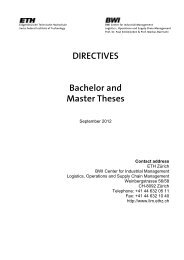The China Venture
The China Venture
The China Venture
You also want an ePaper? Increase the reach of your titles
YUMPU automatically turns print PDFs into web optimized ePapers that Google loves.
2.3.1.1 Financial sector development in <strong>China</strong><br />
In 1949, all banks were expropriated and merged into a monobank system. <strong>The</strong> monobank,<br />
named <strong>The</strong> People’s Bank of <strong>China</strong> (PBOC), had an administrative function within the<br />
centrally planned economy, funnelling budgetary funds to the agricultural and industrial<br />
sectors and acting as a book-keeper. It served the function of retail bank, wholesale bank and<br />
central bank concurrently. <strong>The</strong> PBOC has undergone a number of fundamental changes in the<br />
reform years, leading to a total restructuring of <strong>China</strong>’s banking landscape.<br />
Before 1978, the financial system was largely irrelevant to the country’s macroeconomic<br />
performance. <strong>The</strong> overall paradigm of financial sector reform changed from a moderate to a<br />
more radical stance during four phases of reform beginning in the late 1970s. In the first<br />
phase, from 1979 to 1983, the scope of financial reform was limited to changes in the<br />
structure and operation of the state banking system. At the macro-level, financial institutions<br />
had to be adapted to fulfil the role of the financial intermediaries. On the one hand, the<br />
decentralisation of financial resources into the hands of households led to an explosion in<br />
their saving deposits. On the other hand, bank credit replaced the state budget as the main<br />
source of investment finance. At the micro-level, banks had to start including profitability<br />
among the objectives of their operations. <strong>The</strong>y began to learn to be more selective in granting<br />
loans to enterprises, and to monitor the performance of the latter in order to contribute to<br />
some timid hardening of their budget constraint. In addition, some non-bank financial<br />
institutions (NBFIs) started to develop. 25<br />
<strong>The</strong> second phase, from 1984 through 1988, was the real start of financial-sector reform. <strong>The</strong><br />
rationing of capital in line with the physical plan was abandoned, specialised banks emerged<br />
from the former unified state bank to become the pillars of the new financial system, and new<br />
NBFIs were created. <strong>The</strong> People’s Bank of <strong>China</strong> (PBOC) started to lose some of its powers,<br />
becoming solely the central bank in charge of enforcing a direct monetary policy within a<br />
system of directed capital.<br />
<strong>The</strong> third phase, from 1988 through 1992, was characterised by the experimental nature of<br />
financial-sector reforms. Within the context of a slowdown in reform, caused by the<br />
authorities’ exclusive focus on controlling inflationary pressures, most reforms were limited<br />
in scope, continuously reviewed and sometimes reversed. <strong>The</strong> authorities faced the dilemma<br />
25 Girardin, 1997, pp. 21.<br />
21






